What time is it?
It’s time to teach your students how to read a clock with hands!
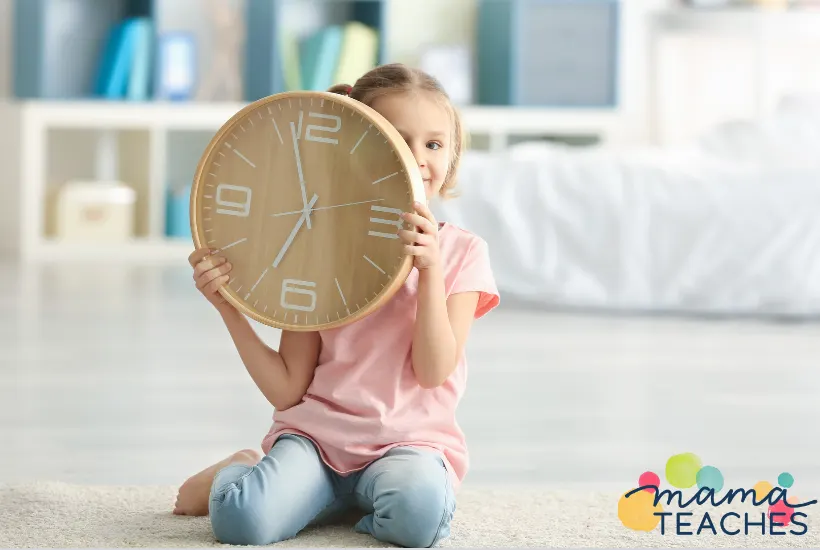
This article contains affiliate links to things that you might like.
Why Reading a Clock with Hands is Important
The world is digital.
Computers, phones, smart watches–all have a digital display.
So why does a person need to know how to read a clock with hands?
Practically, children are exposed to both kinds of clocks: digital and analog (otherwise known as a clock with hands).
Telling time is an important life skill in our society, so children need to know both how to read a clock with hands and how to read a digital clock.
Knowing how to read a clock with hands has other benefits as well:
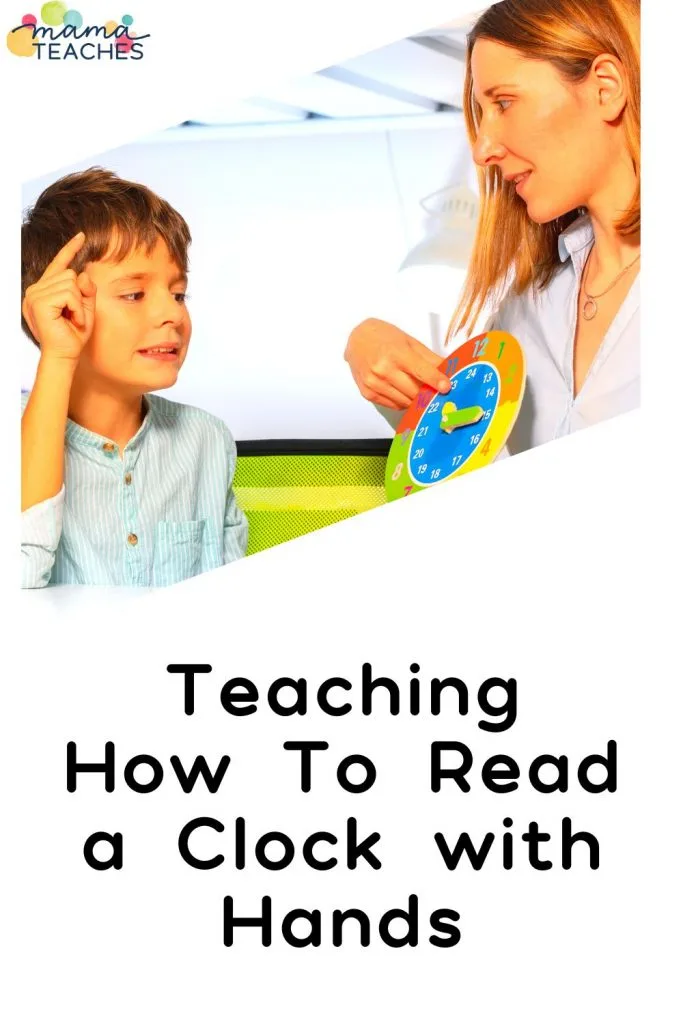
Time Is Easier to Picture
With a digital clock, time is just a flickering change of numbers.
Analog clocks show time in a visual way.
You can measure how much time has elapsed and how much is left to go.
You can literally see the passage of time.
Telling time with a clock with hands is a great help to visual learners.
Helps to Understand Subtraction
Subtraction is not about taking the smaller number out of the bigger number; it’s about the difference between the numbers.
When you learn how to read a clock with hands, you can see the difference between numbers, which is the essence of subtraction.
11:45 is 15 notches away from 11:30.
You can see subtraction in action.
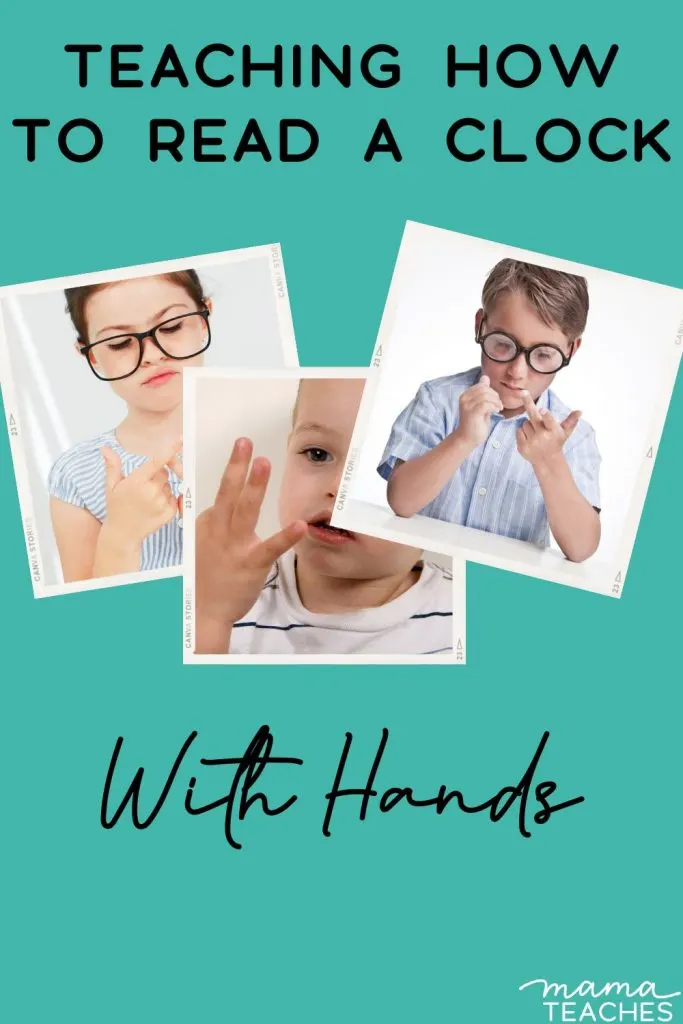
Helps with Skip Counting (and Multiplication)
The numbers on a clock face indicate both hours and minutes.
To calculate the minutes, you need to be able to skip count by 5s all the way up to 60.
This is a precursor to multiplication: when you see the minute hand pointing to 7, you will know to skip count seven 5s (7 x 5= 35).
Helps with Fractions
When you first teach fractions, you use the visual of a cookie, a pie, or a pizza (a round whole).
A clock with hands is also a round whole.
The minute hand cuts the clock face in halves and quarters.
This is where we get the language “half past 5,” “quarter past 5,” and quarter till 5.” Knowing how to read a clock with hands is excellent practice with these fractions.
A Base Other Than 10
So many things are counted with a base 10 system (10, 100, 1000, etc.): centimeters, kilograms, milliliters, dollars and cents.
Minutes, on the other hand, have a base 60. Five and a half hours is not 5 hours and 50 minutes; it’s 5 hours and 30 minutes.
Learning a base 60 system (with all its factors of 1, 2, 3, 4, 5, 6, 10, 12, 15, 30, and 60) is a great way to stretch minds and learn something new.
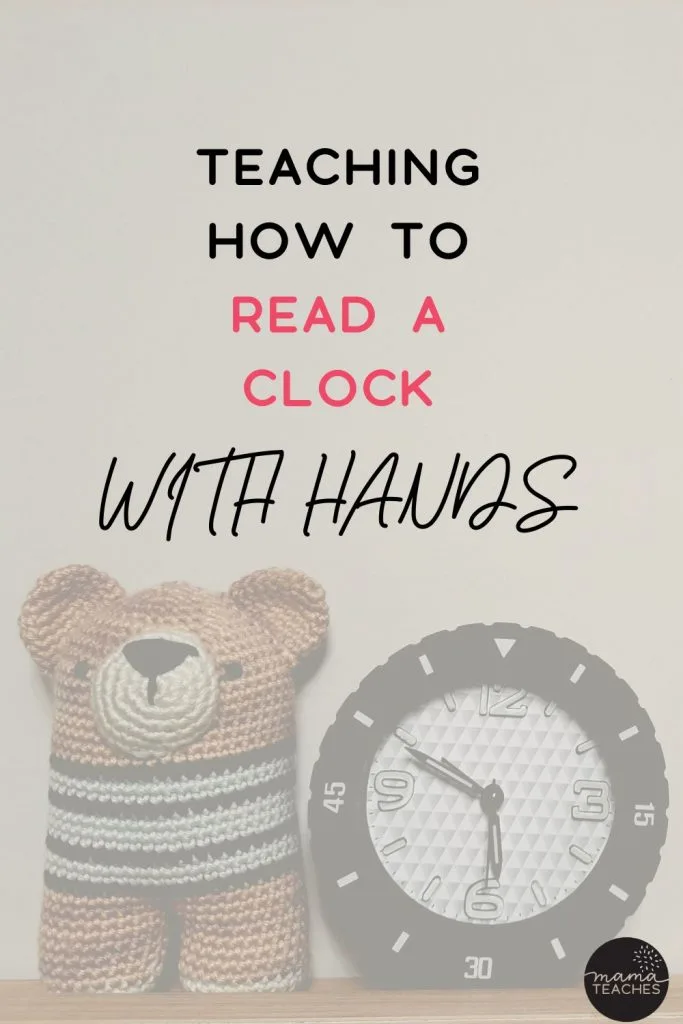
Know the Code
Knowing how to read a clock with hands is like knowing a code, and kids love codes!
It’s one of the basic codes of our society (along with street signs and money values).
Kids love being initiated into this group of insiders, and they will enjoy cracking the code and telling time!
When to Teach Reading a Clock with Hands
Telling time evolves in stages.
Once young children can recognize the numbers 1-12 and can count, you can begin to teach the basics of reading an analog clock: telling time on the hour (e.g., 4 o’ clock).
You can work on this in the preschool years or Kindergarten.
The next stage is learning the half hours: 6:30 or half past 6.
You can also teach the concepts of a.m. and p.m. Kindergartners are ready for this.
The third stage is learning to tell time on the quarter hours as well: 5:15, 8:45, and quarter past 5.
You can teach this in first grade.
The fourth stage in knowing how to read a clock with hands involves reading the minute hand when it hits the multiples of 5 (e.g., 3:20 and 7:55).
This stage requires that children know how to skip count by 5 or multiply the 5s.
This generally happens in 2nd grade.
The fifth stage is telling time to the minute: 11:43 and 6:02. This can happen in second or third grade.
From there you can move onto word problems that involve elapsed time.
“Toni begins her violin lesson at 3:50 and ends and 4:45. How long is her lesson?”
This is a more advanced skill.
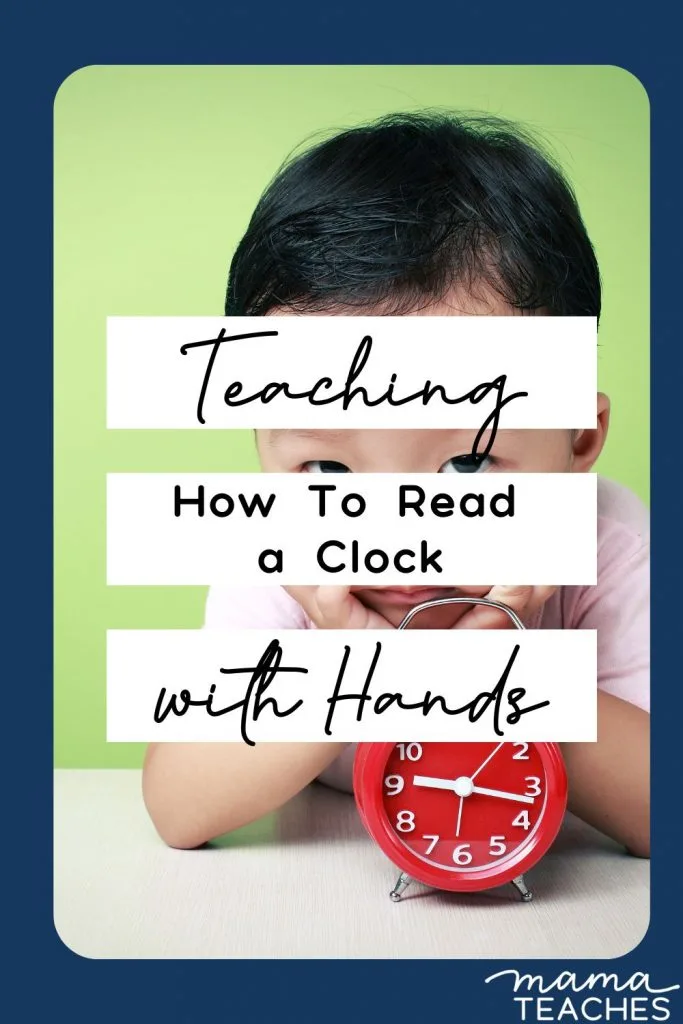
Teaching How to Read a Clock with Hands
When you teach reading a clock with hands, you will need visual aides.
One great tool is a practice clock where you can move the hands.
You start by teaching how to read the hours: “When the big hand is on the 12 and the little hand is on the 7, it is 12:00.
That’s lunchtime.”
You can reinforce teaching with worksheets and digital tools.
One such digital tool is Boom cards.
Boom cards are digital task cards that are self-checking, interactive, and fun.
This set of Boom cards practices telling time by the hour and half hour.
You simply load the cards on the app (it works with Apple and Android) and you’re ready to go.
Learn more about Boom Cards here.
If you don’t already have a clock with a hands-on display, put one up on the wall where your kids can see it.
Make sure it is the kind with the numbers 1-12 that go all the way around the clock and not just 12-3-6-9 with hash marks in between.
Seeing a clock every day provides excellent practice in telling time.
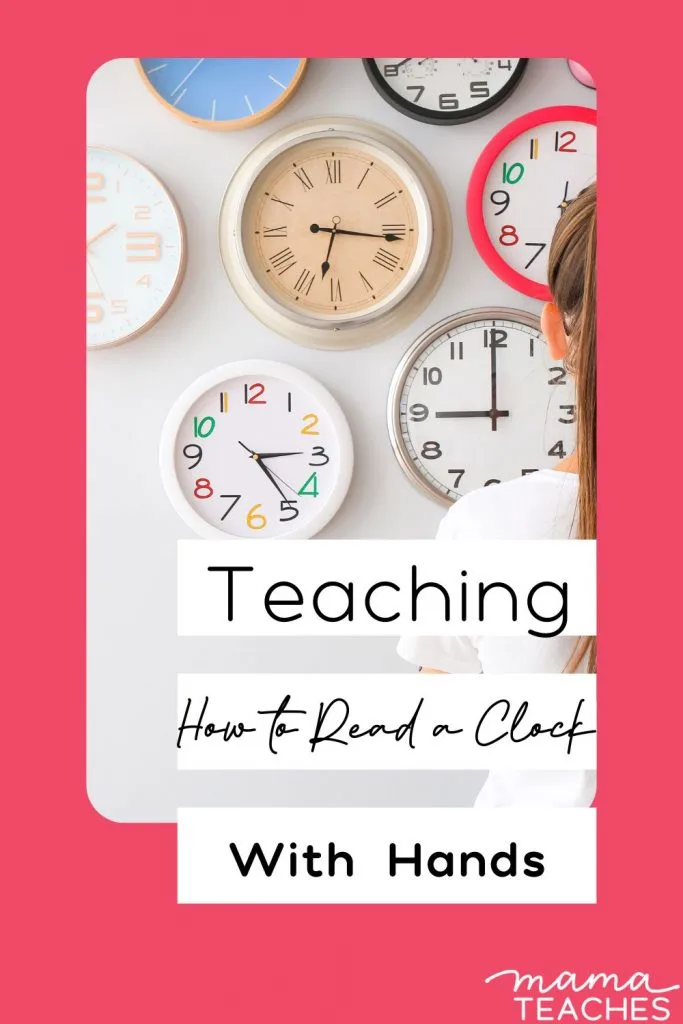
How to Read an Analog Clock
Clocks with hands have been around for hundreds of years.
Even with the advent of the digital age, they aren’t going anywhere!
Knowing how to read a clock with hands is not just a practical skill, it’s a gateway to learning other mathematical concepts.
So let’s start telling time the old-fashioned way!
